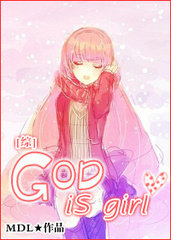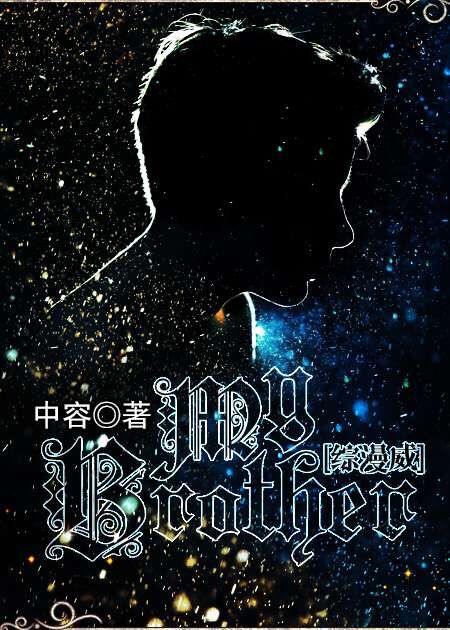the golden chersonese and the way thither-第4部分
按键盘上方向键 ← 或 → 可快速上下翻页,按键盘上的 Enter 键可回到本书目录页,按键盘上方向键 ↑ 可回到本页顶部!
————未阅读完?加入书签已便下次继续阅读!
species of Artocarpus。 They are expert hunters; and have most ingenious
methods of capturing both the elephant and the 〃recluse rhinoceros。〃
They are divided into tribes; which are ruled by chiefs on the
patriarchal system。 Of their customs and beliefs; if they have any;
almost nothing is known。 They are singularly shy; and shun intercourse
with men of other races。 It has been supposed that they worship the
sun。
The Orang Benua or Orang…outang; frequently called Sakeis or Jakuns;
consist of various tribes with different names; thinly scattered among
the forests of the chain of mountains which runs down the middle of the
Peninsula from Kedah to Point Romania。* In appearance and color they
greatly resemble the Malays; and there is a very strong general
resemblance between their dialects and pure Malayan。 They have
remarkably bright and expressive eyes; with nothing Mongolian about
their internal angles; and the forehead is low rather than receding。
The mouth is wide and the lips are large; the lower part of the face
projects; the nose is small; the nostrils are divergent; and the cheek
bones are prominent。 The hair is black; but it often looks rusty or
tawny from exposure to the sun; against which it is their only
protection。 It is very abundant and long; and usually matted and curly;
but not woolly。 They have broad chests and very sturdy muscular limbs。
They are; however; much shorter in stature than the Malays; the men in
some of the tribes rarely exceeding four feet eight inches in height;
and the women four feet four。 Their clothing consists of a bark cloth
waist…cloth。 Some of the tribes live in huts of the most primitive
description supported on posts; while others; often spoken of as the
〃tree people;〃 build wigwams on platforms; mainly supported by the
forking branches of trees; at a height of from twenty to thirty feet。
These wild people; says Mr。 Daly; lead a gregarious life; rarely
remaining long in one place for fear of their wives and children being
kidnapped by the Malays。 They fly at the approach of strangers。 As a
rule; their life is nomadic; and they live by hunting; fishing; and on
jungle fruits。 They are divided into tribes governed by elders。 They
reverence the sun; but have no form of worship; and are believed to be
destitute of even the most rudimentary ideas of religion。 Their weapon
is the sumpitan; a blow…gun; from which poisoned arrows are expelled。
They have no ceremonies at birth; marriage; or death。 They are
monogamists; and; according to Mr。 Syers; extremely affectionate。 One
of their strongest emotions is fear; and their timidity is so great
that they frequently leave the gutta which they have collected at the
foot of the tree; not daring to encounter the trader from whom they
expect some articles in exchange; while the fear of ridicule; according
to Mr。 Maxwell; keeps them far from the haunts of the Malays。
'*I was so fortunate as to see two adult male Jakuns and one female; but
my information respecting them is derived chiefly from Mr。 Syers;
Superintendent of Police in Selangor; and from Mr。 Maxwell; the
Assistant…Resident in Perak。'
The Rayet; or Orang Laut; 〃subjects;〃 or men of the sea; inhabit the
coast and the small islets off the coast; erecting temporary sheds when
they go ashore to build boats; mend nets; or collect gum dammar and
wood oil; but usually living in their boats。 They differ little from
the Malays; who; however; they look down upon as an inferior race;
except that they are darker and more uncouth looking。 They have no
religious (!) beliefs but in the influence of evil spirits; to whom at
times they perform a few propitiatory rites。 Many of them become
Mohammedans。 They live almost entirely upon fish。 They are altogether
restless and impatient of control; but; unlike some savages; are
passionately fond of music; and are most ingenious in handicrafts;
specially in boat…building。
The Chinese in the Peninsula and on the small islands of Singapore and
Pinang are estimated at two hundred and forty thousand; and their
numbers are rapidly increasing; owing to direct immigration from China。
It is by their capital; industry; and enterprise that the resources of
the Peninsula are being developed。 The date of their arrival is
unknown; but the Portuguese found them at Malacca more than three
centuries ago。 They have been settled in Pinang and Singapore for
ninety…three and sixty…three years respectively; but except that they
have given up the barbarous custom of crushing the feet of girls; they
are; in customs; dress; and habits; the exact counterparts of the
Chinese of Canton or Amoy。 Many of them have become converts to
Christianity; but this has not led to the discarding of their queues or
national costume。 The Chinese who are born in the Straits are called
Babas。 The immigrant Chinese; who are called Sinkehs; are much despised
by the Babas; who glory specially in being British…born subjects。 The
Chinese promise to be in some sort the commercial rulers of the
Straits。
The Malays proper inhabit the Malay Peninsula; and almost all the coast
regions of Borneo and Sumatra。 They all speak more or less purely the
Malay language; they are all Mohammedans; and they all write in the
Arabic character。 Their color is a lightish; olive…tinted; reddish
brown。 Their hair is invariably black; straight; and coarse; and their
faces and bodies are nearly hairless。 They have broad and slightly flat
faces; with high cheek bones; wide mouths; with broad and shapely lips;
well formed chins; low foreheads; black eyes; oblique; but not nearly
so much so as those of the Chinese; and smallish noses; with broad and
very open nostrils。 They vary little in their height; which is below
that of the average European。 Their frames are lithe and robust; their
chests are broad; their hands are small and refined; and their feet are
thick and short。 The men are not handsome; and the women are decidedly
ugly。 Both sexes look old very early。
The Malays undoubtedly must be numbered among civilized peoples。 They
live in houses which are more or less tasteful and secluded。 They are
well clothed in garments of both native and foreign manufacture; they
are a settled and agricultural people; they are skilful in some of the
arts; specially in the working of gold and the damascening of krises;
the upper classes are to some extent educated; they have a literature;
even though it be an imported one; and they have possessed for
centuries systems of government and codes of land and maritime laws
which; in theory at least; show a considerable degree of enlightenment。
Their religion; laws; customs; and morals are bound up together。 They
are strict Mussulmen; but among the uneducated especially they mix up
their own traditions and superstitions with the Koran。 The pilgrimage
to Mecca is the universal object of Malay ambition。 They practice relic
worship; keep the fast of Ramadhan; wear rosaries of beads; observe the
hours of prayer with their foreheads on the earth; provide for the
〃religious welfare〃 of their villages; circumcise their children; offer
buffaloes in sacrifice at the religious ceremonies connected with
births and marriages; build mosques everywhere; regard Mecca as the
holy city; and the Koran; as expounded by Arab teachers; as the rule of
faith and practice。
Much learning has been expended upon the origin of Malayan; but it has
not been reliably traced beyond the ancient empire of Menangkabau in
Sumatra。 Mohammedanism undoubtedly brought with it a large introduction
of Arabic words; and the language itself is written in the Arabic
character。 It has been estimated by that most painstaking and learned
scholar; Mr。 Crawfurd; that one hundred parts of modern Malayan are
composed of twenty…seven parts of primitive Malayan; fifty of
Polynesian; sixteen of Sanskrit; five of Arabic; and two of
adventitious words; the Arabic predominating in all literature relating
to religion。 Malay is the lingua franca of the Straits Settlements; and
in the seaports a number of Portuguese and Dutch words have been
incorporated with it。
The Malays can hardly be said to have an indigenous literature; for it
is almost entirely derived from Persia; Siam; Arabia; and Java。 Arabic
is their sacred language。 They have; however; a celebrated historic
Malay romance called the Hang Tuah; parts of which are frequently
recited in their villages after sunset prayers by their village
raconteurs; and some Arabic and Hindu romances stand high in popular
favor。 Their historians all wrote after the Mohammedan era; and their
histories are said to contain little that is trustworthy; each State
also has a local history preserved with superstitious care and kept
from common eyes; but these contain little but the genealogies of their
chiefs。 They have one Malay historical composition; dated 1021 A。H。;
which treats of the founding of the Malay empire of Menangkabau in
Sumatra; and comes down to the founding of the empire of Johore and the
conquest of Malacca by Albuquerque in 1511。 This has been thought
worthy of translation by Dr。 Leyden。
Their ethical books consist mainly of axioms principally derived from
Arabic and Persian sources。 Their religious works are borrowed from the
Arabs。 The Koran; of course; stands first; then comes a collection of
prayers; and next a guide to the religious duties required from
Mussulmen。 Then there are books containing selections from Arabic
religious works; with learned commentaries upon them by a Malay Hadji。
It is to be noticed that the Malays present a compact front against
Christianity; and have successfully resisted all missionary enterprise。
They have a good deal of poetry; principally of an amorous kind;
characterized; it is said; by great simplicity; natural and pleasing
metaphor; and extremely soft and melodious rhyme。 They sing their poems
to certain popular airs; which are committed to memory。 Malay music;
though plaintive and less excruciating than Chinese and Japanese; is
very monotonous and dirge…like; and not pleasing to a European ear。 The
pentatonic scale is employed。 The violin stands first among musical
instruments in their estimation。 They have also the




